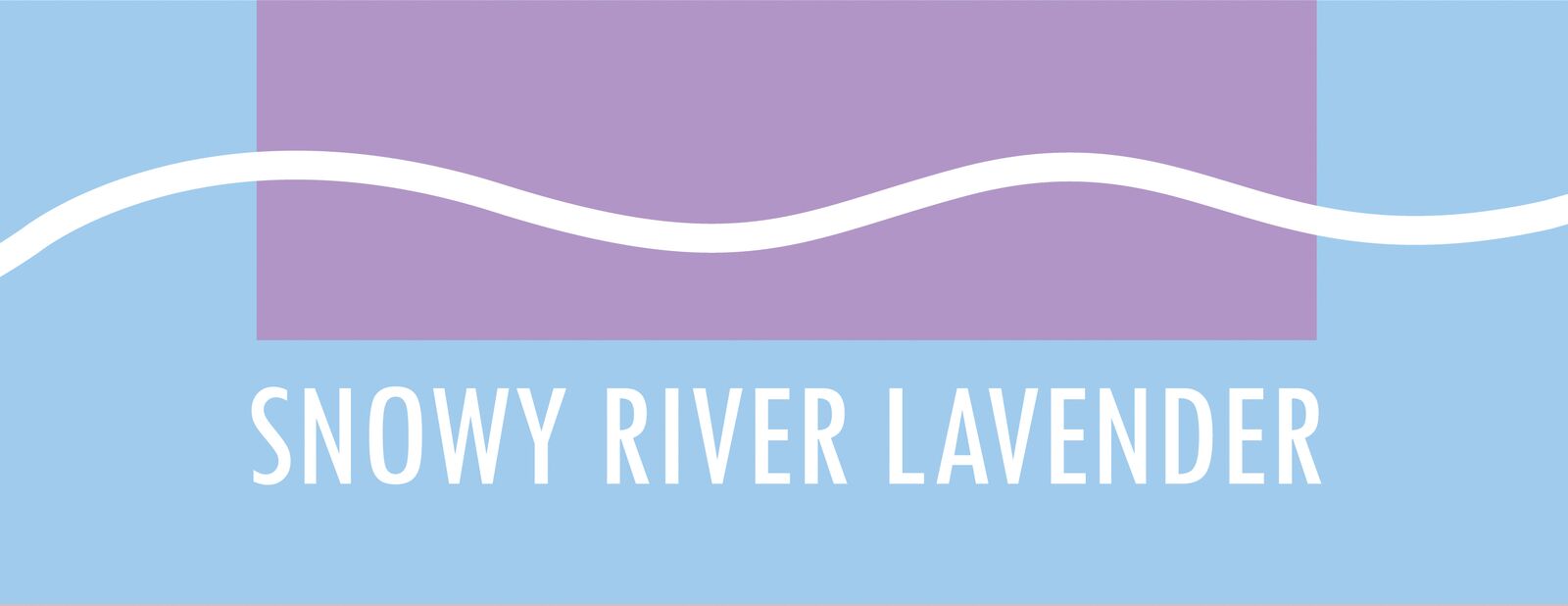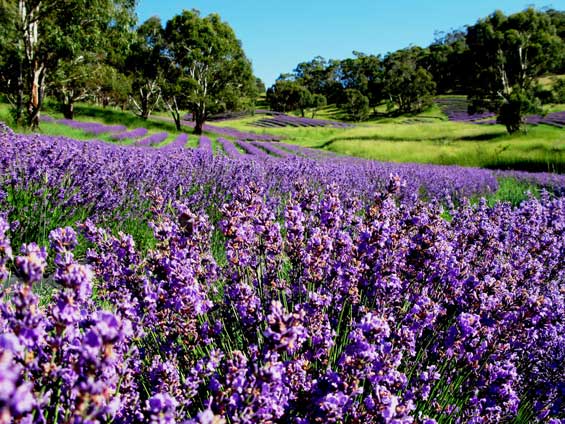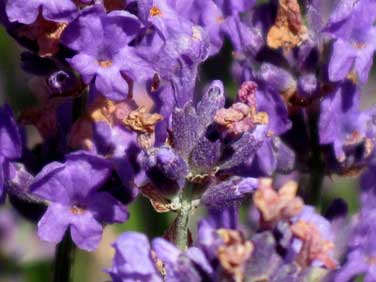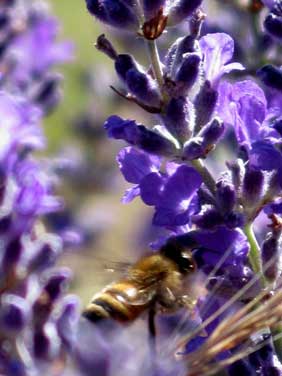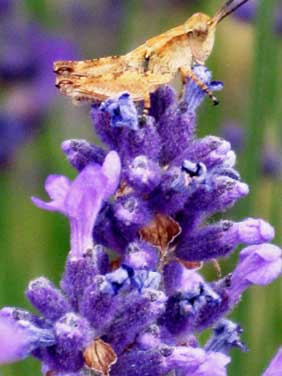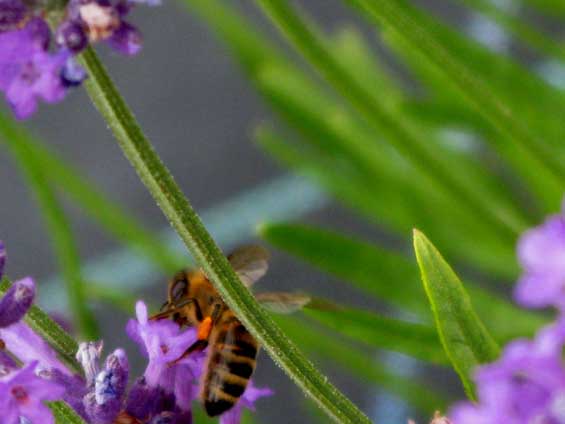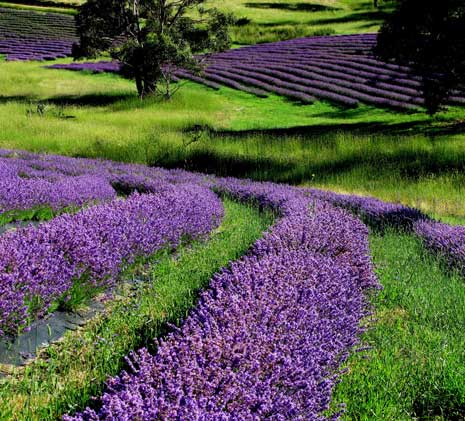
Timing harvest for essential oil production
Timing the harvest is a key determinant in achieving character, quality and yield in our essential oil production. The stage of flowering is pivotal in this decision with nectar feeding insects such as honeybees central in how the timing of the flowering process plays out. However, it must be said that picking the right time to harvest a cultivar in a farming situation is not only about there being an ‘ideal’ time to take a flower but also about logistical issues such as the length of time it takes to remove the flower from the field and when we can give that flower still time. Farming is usually a compromise between these two levels of consideration and seeking to maximize both to produce oils and hydrosols of premium quality.
Stages of flowering and harvest
Lavender is a complex flowering form. The spike, often taken for the flower, is actually a collection of many calyxes each of which buds and flowers across the summer season. When the flower opens it will be visited by a bee, or insect, which triggers a hormonal reaction, the onset of seed set and within a couple days the flower withers and dies (unvisited flowers will last 10 -12 days before it dies, Somerville 2000). This flowering of the lavender spike is not a unitary process where all calyxes flower at once, but one staged over a number of weeks and at any one time during this season all these stages of flowering can be found on the spikes. There are, however, points across the flowering season where different stages of flowering dominate the spike. The greatest depth of colour in the lavender field is when the flowering stage is dominant, with colour diminishing as the percentage of the spike favours spent flower.
New Zealand scientist Noel Porter has done important research into the qualitative contribution of flower head maturity to the aroma and chemistry of the oil produced. His findings are summarised below:
- Fresher more subjectively accessible fragrances come from early harvested flower (33% withered, 33% flower and 33% bud).
- More complex and deeper oils from the later harvested spikes (33% flower, 67% withered).
- Totally spent flowers produced subjectively less attractive oil.
- These subjective assessments were also backed up in the phyto-chemistry, with slightly higher levels of the fresher compounds such as the esters and 1-8 cineole in the earlier harvested flower.
- Porter, N. ‘The Influence of Flower Head Maturity on Oil Quality’ - Noel Porter & Associates, Christchurch, New Zealand: TALGA Conference Proceedings, Launceston Tasmania 2011
Bees and lavender
Anyone visiting a lavender field in mid-summer can be in no doubt about the important relationship between lavender and bees. The field literally hums with a synergy of activity which benefits both these key participants. French researcher, Barbier, working in the late 1950 and early 1960’s, found a significant link between the hormonal reaction caused by bee activity and an increase in essential oil production in the lavender floret or calyx. Thus while the essential oil is not in the lavender flower but in minute sacs with the appearance of glistening hairs on the calyxes, the flower as the plant’s primary interface with nectar feeding insects triggers hormonal change with repercussions in the amount of essential oil the calyx produces.
Key points from Barbier’s (1950 – 1960) research into the effects of bee activity on the essential oil yield of lavenders and lavandins.
- There is a significant link between the hormonal reaction caused by bee activity and an increase in essential oil production in the lavender floret or calyx.
- For the sterile lavandin, the increase was a 16 – 20 % higher yield, attributed to the lavandin’s inability to produce seed and hormonal activity instigated by the bees fed directly into the formation of more oil.
- For the fertile lavender, there is an increase in yield but not as high as for the lavandins, however it was found that there was a 15 day window after the bee’s visit to the flower when the oil production peaked in the calyx after which the oil yield was diminished. It is assumed seed formation then took over as the primary function of the floret.
- (Barbier cited in Somerville 2000) Somerville, D. ‘Bees and Lavender’. Lavender Australia Conference Proceedings, Wagga Wagga 2000.
Timing the harvest at Snowy River Lavender
Barbier’s research argues that yield is maximised through bee activity however the fact is that the flowering of lavender is not synchronised but staged over a number of weeks before the spike finishes its capability of blooming. This means there is no clear cut point at which you can say, ‘this is when all the flowers are out the bees have visited we will take them now’, we will have a great yield. This is where reading the stages of flowering as a qualitative indicator, such as discussed by Porter, becomes useful in how harvest is timed. The reality is that choosing when to harvest is a finely balanced decision which must be worked towards optimising both yield and quality.
At Snowy River Lavender we seek out the point where a particular field of lavender just passes the height of its colour. In other words, we seek to harvest when the balance has just shifted towards spent flower, the point when more than half the flowers are newly spent, usually between 60 and 70%. This means there is still some freshness (flowers and buds) to the harvested spike but bee activity has been significant. The oils we produce do tend toward a bright but resonant complexity and we have adopted this as our signature essential oil character. Importantly this general rule means we leave the flower in the field for as long as is reasonable for the quality of oil desired because as beekeepers we like them to have a fair go as well. Machine harvesting means once the harvest call is made, flower can be brought to the distillery rapidly and the desired character preserved as essential oil and hydrosol.
